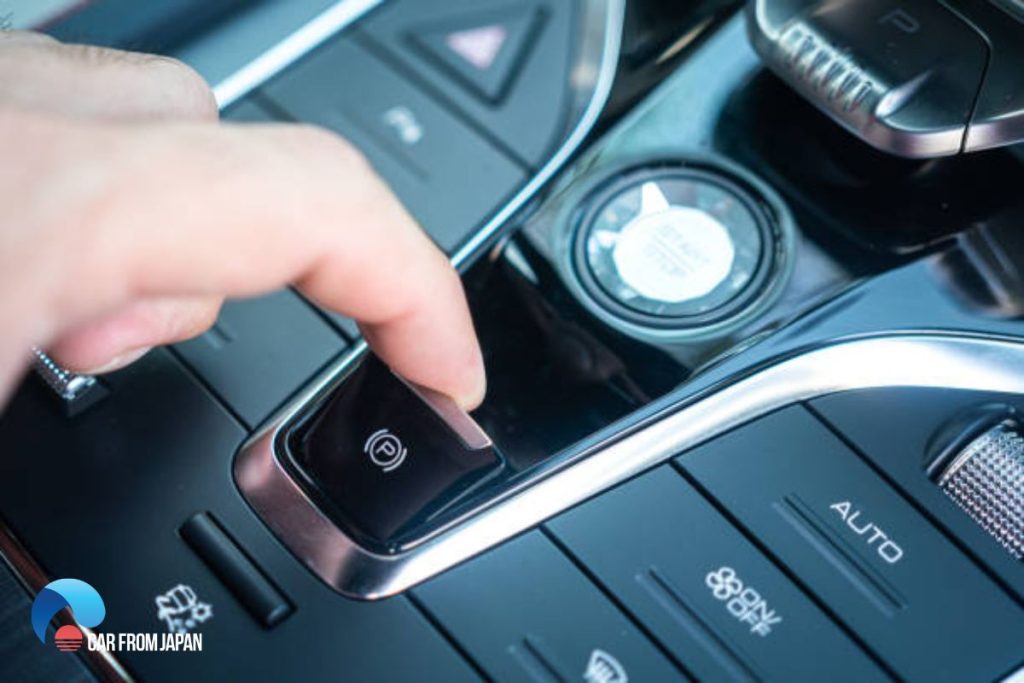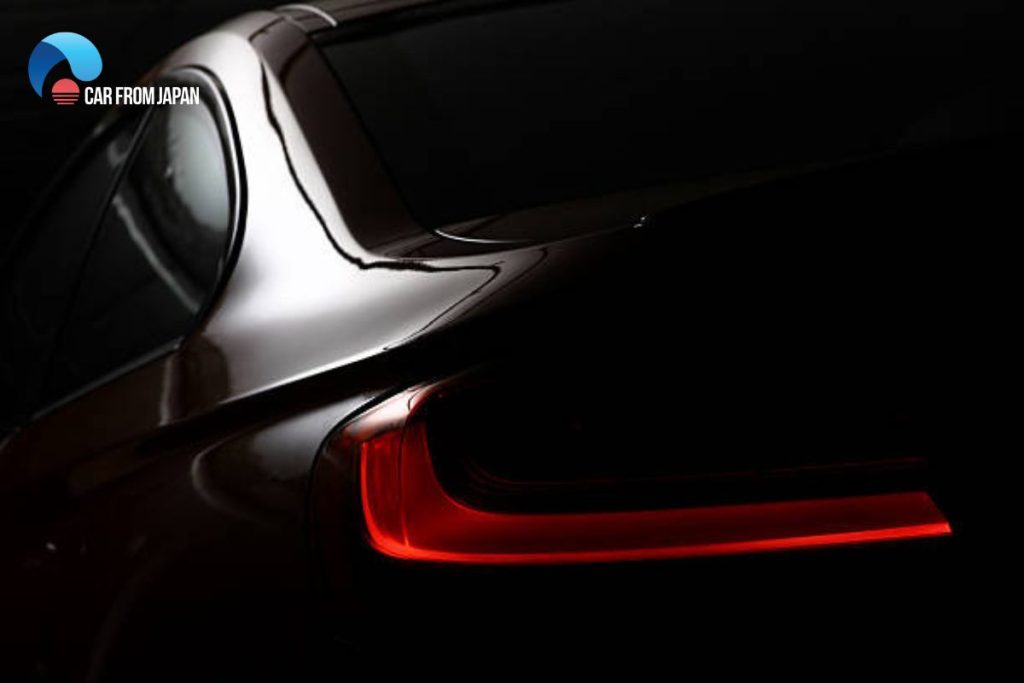Driving with your brake lights constantly on is a surefire way to confuse other drivers and maybe even cause an accident. Let’s make sure your brake lights only shine when you need them to. This guide will walk you through the most common causes and solutions when car brake lights won’t turn off.
Contents
How Do Car Brake Lights Work?
Your braking system, which includes your brake lights, is made up of the brake pedal, striker, brake light switch, lights, fuses, and wiring. When you push the brake pedal, it makes contact with the associated brake light switch, allowing the brake lights to illuminate.
The electrical components use this switch to notify your brake lights when the pedal is down. When you let off the brake pedal, the striker disengages the brake tail light switch, which turns off the brake tail lights.
Although this is a straightforward explanation of how brake lights function, damage to the striker or brake light switch might result in brake light issues.
Why Do Car Brake Lights Won’t Turn Off After Turning The Ignition OFF?
Diagnosing the brake switch or pedal issue is necessary to fix it properly. You can check the brake pedal stalk to find the switch. Or taking the car to an expert mechanic would be a wise decision as well.
Pressing and depressing the brake pedal numerous times might help to connect the switch and tail lights. There is a rubber stopper that pushes the plunger-style button. You might need to replace the rubber stopper if it is not working correctly.
Here are the reasons behind brake lights not turning off even when the car is off.
Brake switch not working

The brake lights won’t turn off if the switch is stuck or not working properly. You might need to adjust or replace the brake switch to fix the issue.
The automobile battery starts to drain if the brake lights are ON for long time. The professionals suggest detaching the car battery when facing this issue. Make sure to save battery power to start the car until the issue is resolved.
According to expert maintenance tips, brake switch sticking is the most common reason behind lights staying ON. You can replace the switch from the brake pedal to identify the problem.
Diagnosing the brake switch would help to discover the main problem. Go for the replacement if the brake switch is out of order.
Brake pedal stuck
The brake pedal stuck can be another reason for the brake lights staying ON. The brake lights won’t turn off if the brake pedal is not closing the switch properly.
The lights remain ON until the connection between the switch and pedal is active. The rubber stopper also has a lot of work to do in this process. It helps to adjust the brake pedal appropriately.
Debris or corrosion between the switch and pedal might also affect the process. Going to the experts would be great to resolve the issue in no time.
Make sure to give your car professional servicing and maintenance if the issue is not fixed.
Brake light switch or Sensor failure
This is the most obvious cause of your brake lights not working. When the switch inside the braking system fails, your lights will not turn off. The switches and sensors in a braking system notify the lights whether the pedal is up or down.
If one of these is broken, the lights will get the wrong message. The brake pedal switch is placed near your brake pedal and may be adjusted frequently.
Brake pedal spring defect
The brake pedal has a spring that allows it to return to its original position once you release it. This spring may grow feeble as it ages.
Because the pedal does not return to its normal position, the brake lights stay on. Furthermore, it might cause your brake pads to remain engaged, resulting in increased pad and rotor wear.
Electrical system malfunction
A problem in the electrical system can impact a variety of components, including the brake lights. These flaws might cause the lights to stay on, not illuminate, or only operate intermittently.
This may be the most difficult problem to solve and should not be considered until all other possibilities have been exhausted.
Incorrect light bulbs Installed
This is uncommon, however, it might occur if you have just updated your tail or brake lights. There are two types of light bulbs, each with one or two circuits.
Installing a light bulb with one circuit in a socket with two circuits might short the circuit and cause the brake lights to illuminate.
How To Fix The Car Brake Lights Won’t Turn Off
Check your previous projects
If you’ve just installed an aftermarket system that necessitates the removal or replacement of the tail light assembly, you should go back and double-check your work.
If you changed any of the wiring, double-check that it is connected correctly per the aftermarket manufacturer’s instructions.
Check the brake wiring
Examine the wiring under the tail light assembly and beneath the dash near the brake light switch. Even though the wire and insulation look to be in good condition, you may have a wiring problem.
It’s also a good idea to check the fuses under the hood and in the cabin. If a fuse blows, the brake light switch may not function properly.
You may also consult the manufacturer’s service manual to see which grounds the braking system uses. Check that the grounds are clean, tight, and in functioning condition.

Test a brake light switch
A brake light switch is a very basic mechanism that you can most likely test yourself with a multimeter.
When you press the switch, the circuit should be open, and there should be no continuity. This switches off the brake lights. When the switch is released, there should be no interruptions. This activates the brake lights.
After you’ve confirmed continuity, make sure the resistance being transferred through the switch is correct.
A faulty switch may pass a continuity test but not be able to transmit enough electricity to turn on the brake lights. The exact switch specs should be specified in the OEM service manual.
The wiring schematic comes in handy while checking the brake light switch connector. This will advise you which pins to connect in order to turn on your brake lights. The manual handbook may offer further diagnostic advice and information about the system’s intended behavior.
How To Check Brake Lights For Proper Operation
There are several techniques for testing the functionality of brake lights. While you may prefer to rely on your sophisticated instrument panel to do the job for you, nothing beats experiencing brake light behavior for yourself. Here are some simple methods:
Ask for assistance
To test your brake lights, just have a friend, family member, neighbor, or passenger either apply the brake pedal while you watch or check the lights while you do the footwork.
Reflection in the storefront window
When you’re away from home, look for a shopping area with parking just in front of a store. The storefront window can be used as a mirror. Back your automobile into a parking slot in front of a glass window panel if traffic and foot traffic allow.
Now, check your rearview mirror and use the brakes. If everything is in order, all of the brake lights should illuminate. You should also check your rear turn signals and emergency flashers.
Rep with the engine was turned off and the ignition was turned off. Make a note of any sites with no light operation for further action. The turn signals will not work if the ignition is turned off.
Try it out with a garage door
If you’re at home, park your car in the garage and lock the door behind you. If your brake lights are reflecting on the garage door when you press the brake pedal in a dark garage, you’ll be able to see through your rearview or side mirrors.
This strategy can also be used in a covered parking garage away from home. Simply return to your parking spot and check your rearview mirror for brake light activation while applying the brakes.
This is also an excellent technique to test other lighting issues, such as when your rear lights fail to illuminate.
DIY tools
If you’re at home and don’t have access to a garage or a helper, you can construct a tool to push and hold down the brake pedal. Here’s how you can make one:
- Remove the driver’s side door. Press the brake pedal down approximately an inch with your left hand. Calculate the distance between the pedal and the front of the driver’s seat. Depending on the seat position, it will be between 18 and 22 inches.
- To make this length, cut a 1″ x 2″ trim board or an old broom handle.
- With this tool, press down on the pedal and wedge the tool’s back end against the driver’s seat. The brake lights will now be available for you to inspect. Surprisingly, a basic snow brush is about the appropriate length for this purpose.
Final Thoughts
So, your brake lights refuse to turn off. Don’t worry, you’ve got the knowledge to handle it! We’ve explored the common culprits – from a sticky brake light switch to a faulty wiring harness – and hopefully, you’ve pinpointed the issue in your car.
Your automobile’s brake pedals might require special treatment to remain in good condition. If the brake lights won’t turn off even when the ignition is off, then make sure to check the brakes ASAP.



